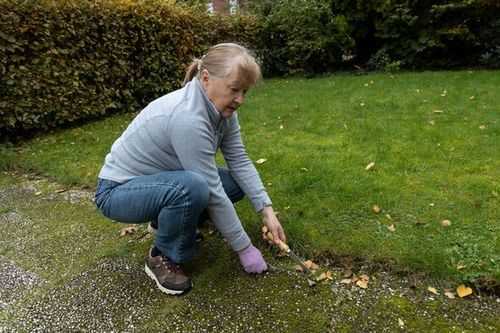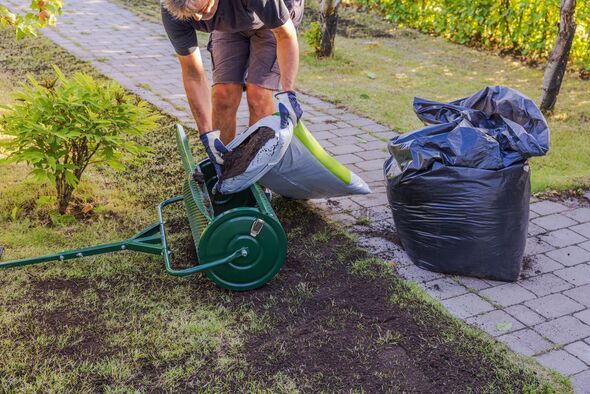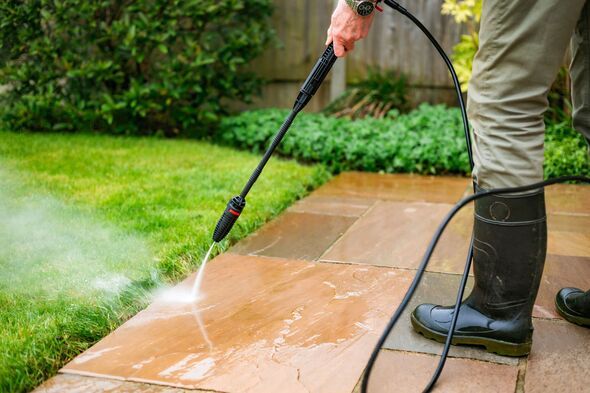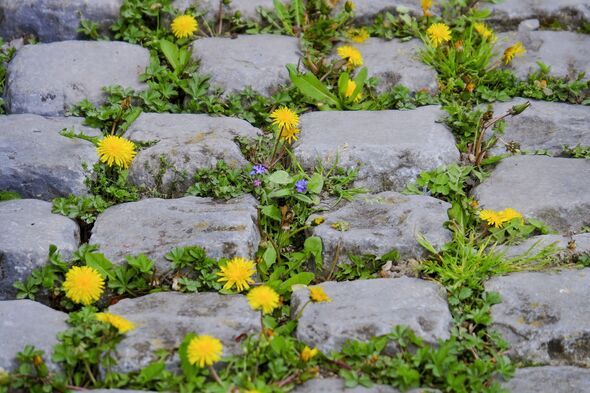

Whether someone is an amateur or a green-fingered pro, we all know the drop in temperature poses a threat to outdoor spaces.
In particular, searches for 'planning a winter ' have risen by a staggering 2,186 percent this year alone.
However, Andy McLaughlin, landscaping specialist at believes there's no time like the present to get on top of winter garden prep.
Especially as the Met Office has issued a to certain parts of the UK this week.
He has revealed his top tips for preparing for colder including why homeowners should check their garden paving.
 Inspect any paving joints
Inspect any paving joints
If homeowners have a paved area in their garden, inspecting the joints of the paved areas will give an idea if they are good for another winter, or need replacing before the onset of the colder weather.
If the joints are cracked or dislodged, then serious consideration should be given to replacing the jointing compound. Some compounds may be repairable by just removing the affected area, whilst others may need the whole of the jointing compound removed and replaced.
Failing to repair or replace damaged jointing compound can in the more severe cases lead to the paving needing replacing.
If water seeps underneath the paving, and the bed of the paving isn't permeable (lets water soak through), then this can cause what is known as 'frost heave'.
Frost heave happens in frosty conditions, because of the freeze-thaw process. Any water that has seeped through the damaged joints and is trapped within the pores of the mortar bed, will freeze in cold temperatures.
Once this trapped water thaws in relatively milder temperatures, it expands and because this pressure has nowhere to go other than the weakest point, more often that force is upwards, causing the mortar bed to 'fail', and lift the paving and potentially lead to the whole of the paved area needing replacing.
 Clean and prep stonework
Clean and prep stonework
When the icy weather begins, it can cause havoc on gardens. The freezing and thawing process poses a threat to any stone foundations, but cleaning all paving and stonework thoroughly before the temperature drops can help.
Any mould, mildew and other fungi that has discoloured your paving gets worse during winter. Begin with cleaning the paving surface and treat it with sand, which is a cheaper and less damaging alternative to rock salt.
The surface will have good traction, and the cracks and gaps will be correctly filled. If you have time, consider using a sealant to protect your paving further.
If leaves and foliage are left on paving, they decompose leaving a residue that is often very difficult to remove, or in some cases cause irreversible damage.
Especially in natural stone paving, where the residue can impregnate the surface of the stone. Porcelain paving is somewhat more resistant to staining, but again stubborn marks may need extra attention.
Continue maintenance through winterTo keep the garden and paved areas in good condition right through to the warmer months, the main thing that should be done regularly is to keep the areas clean and tidy.
Regularly moving leaves, debris and fallen foliage will reduce the risk of them causing damage and staining or becoming a slip hazard.
Regular cleaning of the hard surfaces will not only maintain the aesthetics, but stop dirt, algae, and mosses from accumulating.
If paving isn't kept clean, then there is a high risk that it could become slippery and dangerous. Although exterior porcelain should have a slip-resistant surface, unless this surface is kept clean then its slip-resistant properties cannot take effect.